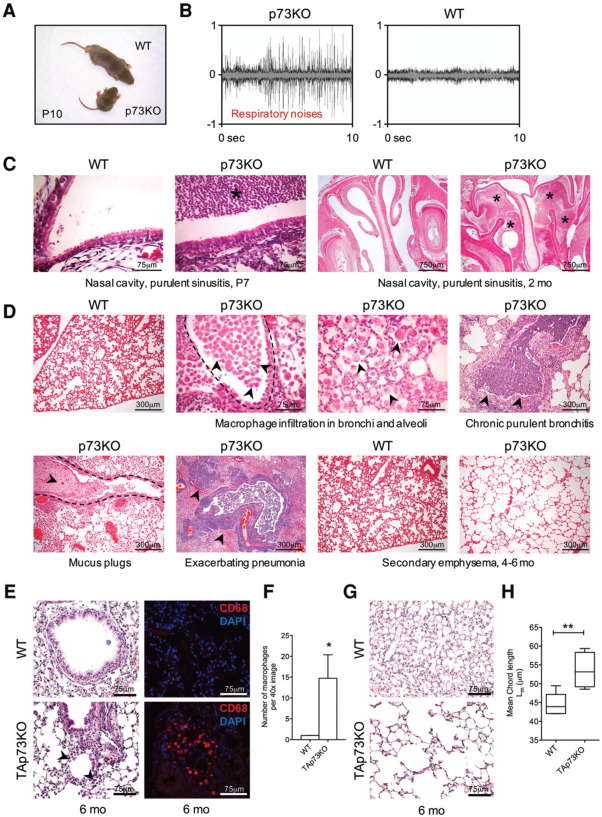Figure 1.
TP73 deficiency causes chronic upper and lower respiratory tract infections eventually leading to secondary emphysema. (A) Postnatal day 10 (P10) wild-type (WT) and p73 knockout (p73KO) littermates. While 20% of p73 knockout mice die young from severe hydrocephalus, 80% survive long-term when pups are separated from littermate competition (Nemajerova et al. 2010). (B) Coughing/sneezing phenotype of p73 knockout mice. Audiograms of knockout and wild-type mice at P42. Wild-type mice are silent (minor amplitudes in the wild-type track are due to rustling sounds from bedding material). See also Supplemental Figure S1A and Supplemental Movie S1. (C,D) p73 knockout mice suffer from chronic upper and lower respiratory tract infections since a young age. This includes purulent sinusitis, macrophage infiltration of bronchi and lung parenchyma, chronic bronchitis with mucus plugs, and exacerbating pneumonia. Over time, this leads to inflammation-mediated alveolar destruction with secondary emphysema. An asterisk denotes purulent exudate. Two images from overlapping areas of the same WT lung are shown. The WT image in the bottom row emphasizes the difference from the emphysematous p73KO lung. (E–H) TAp73 knockout (TAp73KO) mice have a similar phenotype. (E) Macrophage invasion in TAp73 knockout lungs stained with H&E, CD68 (red), and DAPI (blue). (F ) Quantification of CD68 immunostaining. n=3 mice per genotype at 6 mo; 12 images per mouse. (G,H) Emphysema with quantification of mean chord length at 13 mo. n=4 per genotype.

